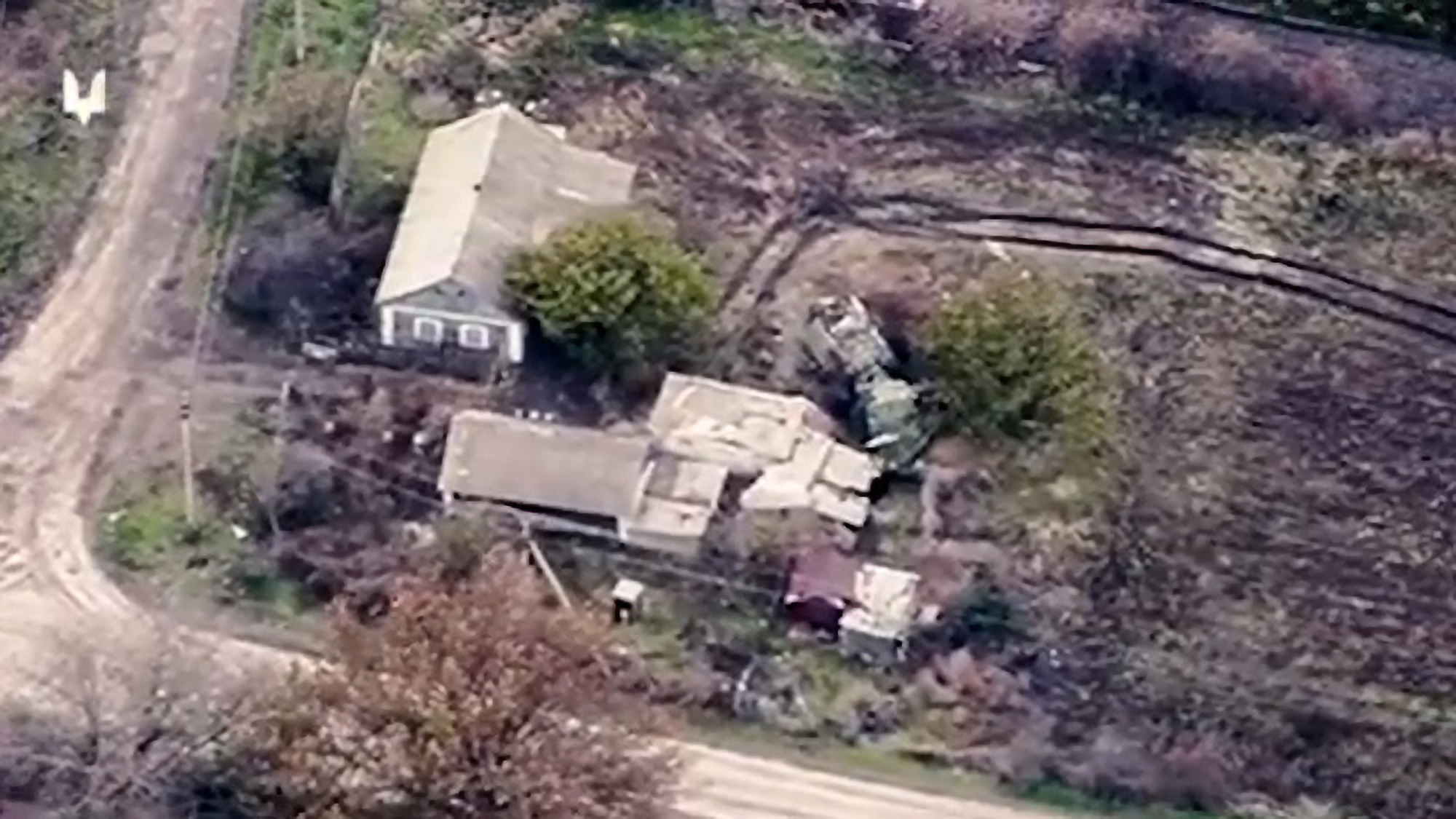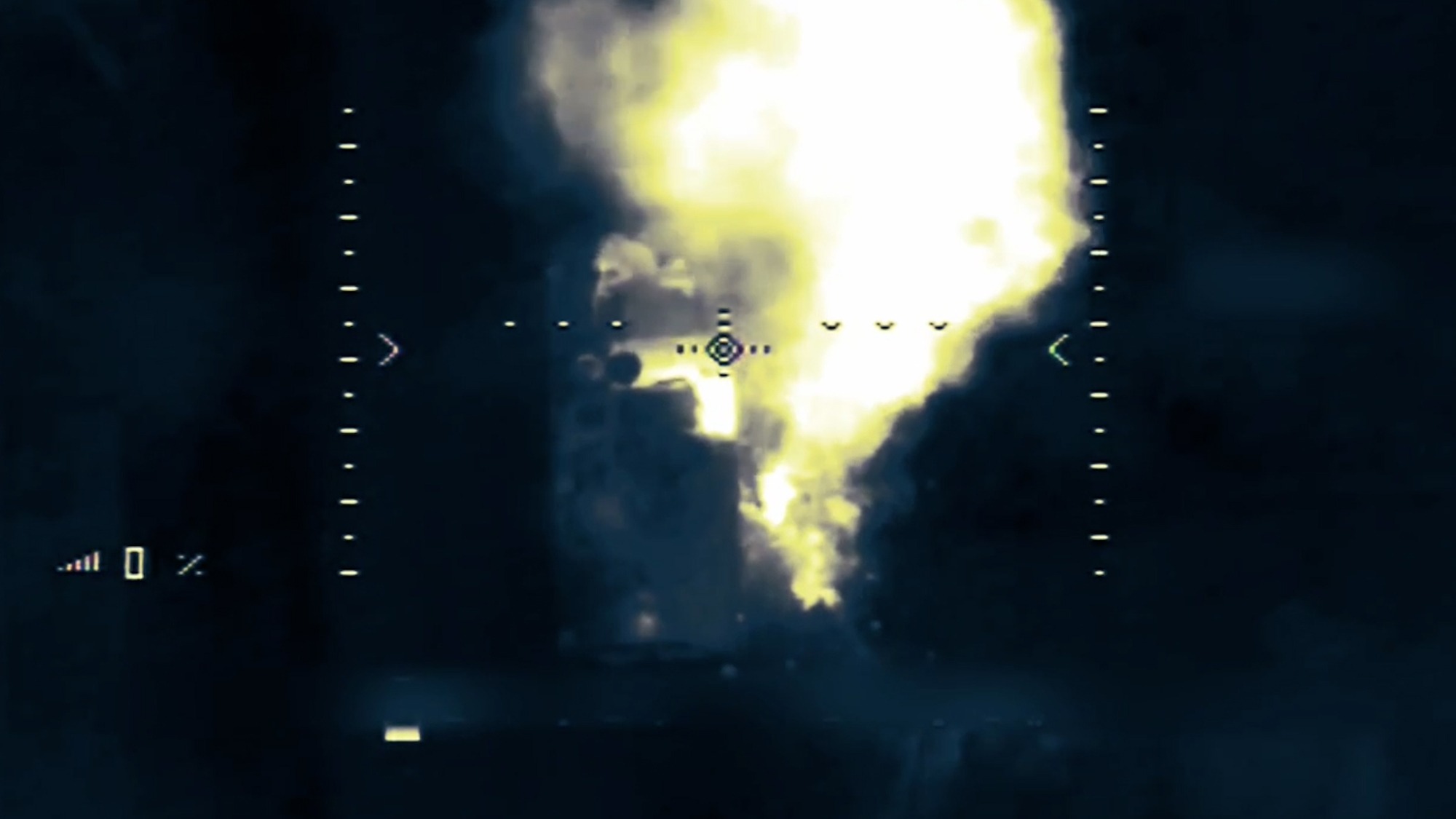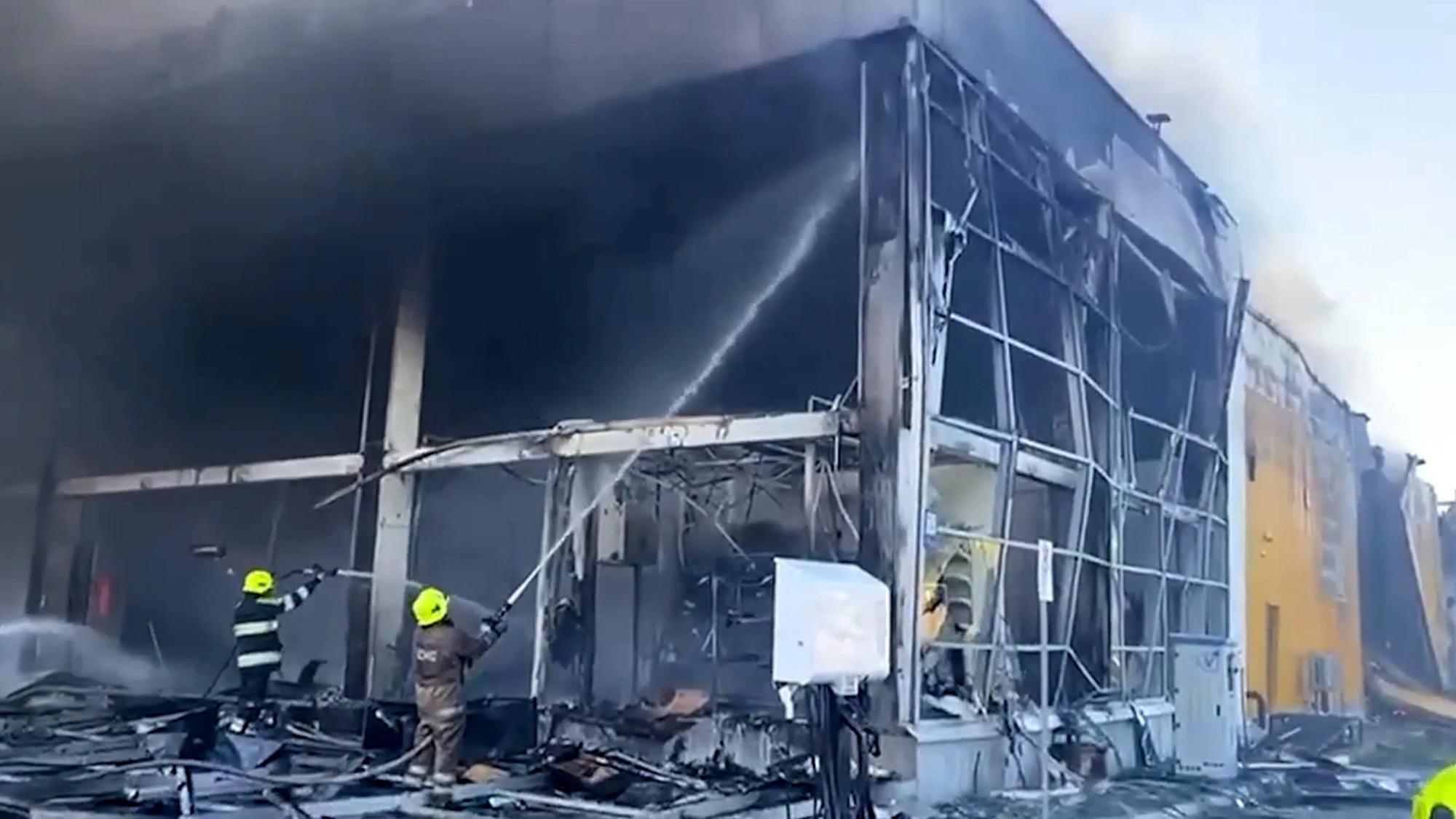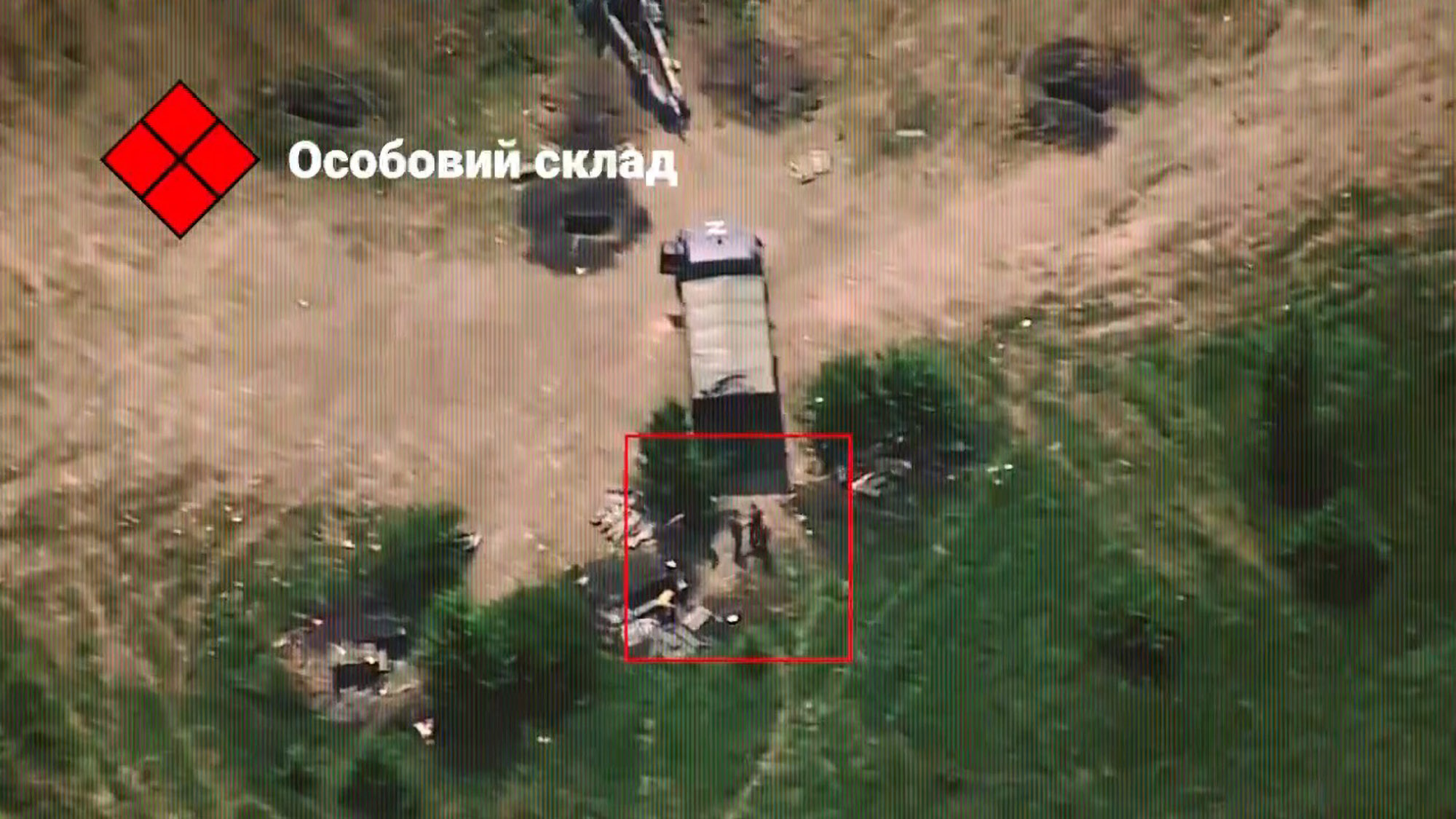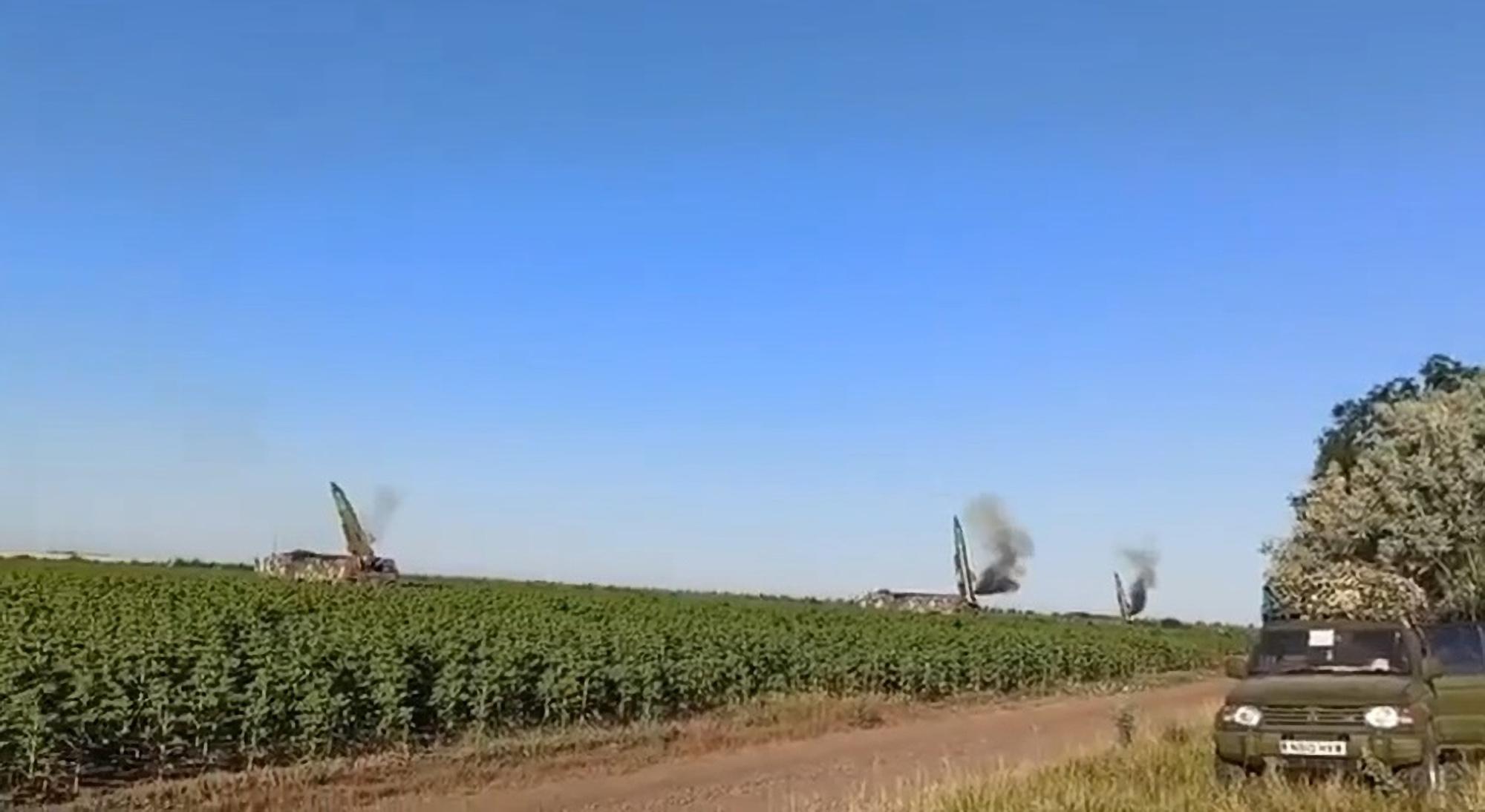This is the moment Russian doctors remove an unexploded fragmentation grenade from a soldier’s thigh while wearing bulletproof jackets.
The footage shows the medical personnel apparently removing the device from the wounded soldier, who can be seen lying on an operating table.
The device can then be seen being taken away in a secure box to be destroyed.
The images were obtained from the Russian Ministry of Emergency Situations on Wednesday, 29th November, along with a statement claiming: “In one operating room there are sappers from the Russian Ministry of Emergency Situations and doctors from the Naval Clinical Hospital named after Pirogov.
“In Sevastopol, doctors removed unexploded ordnance from the body of a soldier. The assistants to the operation were pyrotechnicians from the Russian Ministry of Emergency Situations.
“The machine gunner was wounded during an air strike. A dangerous object hit his thigh.
“Employees of the Russian Ministry of Emergency Situations determined the type from X-ray images – a VOG-17 fragmentation grenade.
“Other patients were evacuated from the hospital to safety. Doctors worked in bulletproof vests. Pyrotechnicians from the Russian Ministry of Emergency Situations were also on duty here.

“The ammunition was removed from the man’s body. Employees of the Russian Ministry of Emergency Situations took out the grenade in an armoured container and sent it for disposal.”
We have not been able to independently verify the claims or the footage.
Russia invaded Ukraine on 24th February 2022 in what the Kremlin is still calling a “special military operation”. Today marks the 645th day of the full-scale war.
The General Staff of the Armed Forces of Ukraine reported that between 24th February 2022 and 30th November 2023, Russia had lost about 328,760 personnel, 5,551 tanks, 10,340 armoured combat vehicles, 7,909 artillery units, 910 multiple launch rocket systems, 600 air defence systems, 323 warplanes, 324 helicopters, 5,954 drones, 1,567 cruise missiles, 22 warships, 1 submarine, 10,361 motor vehicles and fuel tankers, and 1,124 units of special equipment.
Russia has claimed that its casualties have been much lower but provides infrequent updates on its latest figures.
Ukraine has said that it has killed five high-ranking Russian officials in a strike in an occupied part of Kherson in southern Ukraine.
The Ukrainian Armed Forces said that the strikes had targeted the officials at a meeting in the village of Yuvileyne thanks to “information provided by the underground and concerned local residents”.

Ukraine has said that its air defences shot down all 21 Russian drones launched at the western Khmelnytskyi region overnight on Tuesday.
Khmelnytskyi is home to a Ukrainian air base.
Ukrainian military spokesperson Oleksandr Shtupun has said that Russia is increasing its attacks in eastern Ukraine.
He said that Russia had “doubled its artillery fire and airstrikes” and “intensified ground infantry attacks”.
Jens Stoltenberg, the Secretary-General of NATO, has warned that the alliance must not underestimate Russia’s ability to continue fighting its war in Ukraine.
He said: “Russia’s economy is on a war footing, Putin has a high tolerance for casualties, and Russian aims in Ukraine have not changed.”
Ukraine’s Foreign Minister, Dmytro Kuleba, has said that the European Union has so far delivered about 300,000 of the one million that it has promised.

He said that Ukraine’s war effort meant that Ukrainian and NATO arms production needed to be more aligned and that there was a need to create a “Euro-Atlantic common area” of defence industries.
Kuleba also said that he had seen no sign that Ukraine’s NATO allies were suffering from fatigue over providing it with support.
He said: “I heard a clear ‘No’ to any reference to fatigue, and I heard [a] clear ‘Yes’ to increased support to Ukraine.”
He added: “They understand that in order for them to feel safe, in order for them not to end up in a situation where NATO’s soldiers will have to fight, Ukraine has to win in this war.”

